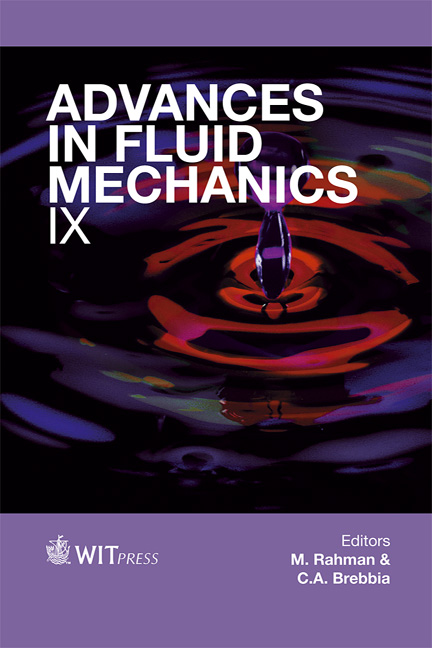A Turbulence Closure Based On The Maximum Entropy Method
Price
Free (open access)
Transaction
Volume
74
Pages
10
Page Range
547 - 556
Published
2012
Size
334 kb
Paper DOI
10.2495/AFM120471
Copyright
WIT Press
Author(s)
R. W. Derksen
Abstract
The fundamental problem of turbulence is that of closing the infinite sequence of equations that result from the application of Reynolds averaging to the governing relations for momentum, heat and mass transfer. These equations model the moments of the turbulent probability density, PDF, such as the first, second, third, and higher order moments, each equation depending on higher order moments. The ability to relate the set of moments of order n to moments of n+1 would permit closure to a finite system of equations as we could truncate the sequence of equations. The concept of the Shannon entropy allows us to model the degree of uncertainty of a PDF. The Shannon entropy is related to the concept of thermodynamic entropy. The maximum entropy method determines the PDF that maximizes the entropy subject to a number of constraints. The most usual method is to use a finite number of lower order moments. A maximum entropy PDF is often used to approximate the shape of a PDF as the solution has desirable features such as being positive definite. The maximum entropy method is of great value as an approximation method in general. An examination of the behavior of the moments generate from a maximum entropy for a single degree of freedom fit to real, turbulent PDFs for velocity, skin-friction, and temperature fluctuations have been carried out to examine the methods ability predictive capability. In this examination experimentally determined data sets that contained data for all moments up to the sixth order were compiled from the literature. The maximum entropy method was applied using the first four moments. The fifth and sixth moments computed from the maximum entropy approximations were compared and found to compare very favorably with those measured. The presentation will start with a review of the maximum entropy method for a finite number of moments and a discussion of the computational
Keywords
turbulence closure, maximum entropy, turbulence modelling, turbulent PDF





